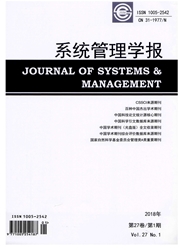

 中文摘要:
中文摘要:
保证金制度是期货市场风险管理体系的核心,而维持保证金水平的设定又是保证金制度中最为基本的内容。合理的维持保证金水平应兼顾期货市场的2个重要因素:稳定性和活跃度。考虑到常用的收益率序列遗漏盘中价格变动讯息,以沪深300股指期货5分钟高频数据为基础,结合期货实务操作特点,构造多头和空头的日内最大损失率序列,进一步提出一个新的波动率测度即日内最大损失率方差,并将随机波动均值内(SV—M)模型、极值理论的超阂值(POT)方法以及幂谱风险测度(PSRM)方法相结合,构建一个新的维持保证金水平设定模型(SV—M—POT—PSRM),据此分别进行多头和空头维持保证金水平的设置。与基于GARCH—M—VaR、GARCH—M—POTVaR、SVM—VaR和SV—M—POT—VaR等模型设定的维持保证金水平进行比较后发现,无论是在多头还是空头条件下,基于SV—M—POTPSRM模型设定的维持保证金水平,既能更好地满足安全性要求又能使资金使用效率大幅提高。
 英文摘要:
英文摘要:
The margin system is the core of the futures market risk management system, and the setting of maintenance margin levels is the fundamental for the futures margin system. The reasonable maintenance margin levels should comprehensively take the stability and active degree of futures market into account. Considering that the commonly used return series usually omit the relevant information about the change of intraday prices, and using the 5 minutes high frequency data of CSI300 Stock Index Futures, we construct maximum loss series of both the long and the short positions, and propose a new volatility measurement, i. e. , the variance of the maximum loss series in a single trading day. We then propose a SV-M-POT- PSRM model based on SV-M model, POT model and PSRM method, and sets the maintenance margin levels for the long and the short positions by this model. Compared the proposed model with the four models, namely, GARCH-M-VaR, GARCH-M-POT-VaR, SV-M-VaR and SV-M-POT-VaR, we find that the maintenance margin levels set by the proposed model satisfy the safety requirements and significantly improve utilization of the funds.
 同期刊论文项目
同期刊论文项目
 同项目期刊论文
同项目期刊论文
 期刊信息
期刊信息
